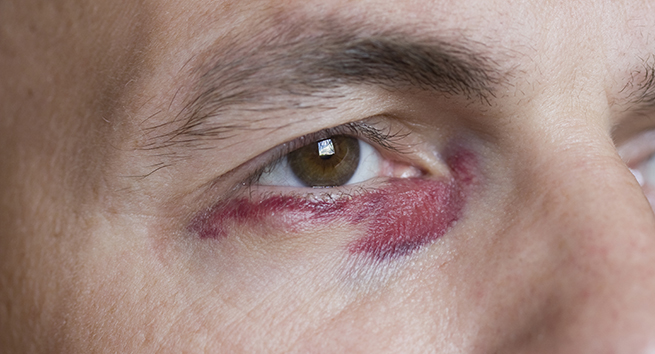
As careful as we are during our everyday lives, there are some things that are out of our control. Trauma to the eye and orbit (the bone surrounding the eye) is more common than you may think. Every day, around 2,000 people in America suffer job-related eye injuries. We are experts at handling orbital trauma and can help manage even serious cases.
What Is Orbital and Eye Trauma?
Orbital trauma is any injury to the skin and bone the surround the eye. Eye trauma refers to injury of the eye only. There are many different kinds of injuries that fall under the umbrella term of “trauma.” These can include blunt force injuries, penetrative injuries, chemical injuries and more. Around the orbit, blowout fractures are common. The surface of the cornea can also become injured through scratches or cuts.
How is it treated?
The treatment of orbital and eye trauma depends on the area, type, and severity of the injury.
Eyelid laceration: An eyelid laceration is a cut on the eyelid – in some minor cases, minimal treatment is needed and no stitches are required. However, a severe cut on the eyelid requires medical attention as soon as possible.
The doctor will evaluate the cut, determining if any damage to the eyeball or cornea has occurred. She will also examine for foreign bodies, i.e. glass, rocks, or any material that may have gotten under the eyelid when the injury was sustained.
To treat an eyelid laceration (in the instance of a deep enough wound) stitches are used to seal the wound. If the cut does not require sutures, the doctor will assist in cleaning and disinfecting the wound prior to leaving the clinic.
It is important to seek an oculoplastic surgeon in the treatment of major eyelid lacerations, as there are many underlying structures in the eye that a trained professional must be mindful of in treating the wound.
Canalicular laceration: A canalicular laceration involves damage to the canalicular system, which is the drainage system that allows tears to pass from the eye’s surface, through the puncta, and down the nasolacrimal sac to the nose.
The repair of a canalicular laceration requires the skills of an experienced oculoplastic surgeon. In many cases, a stent (a small tube) must be placed to maintain proper drainage of the eye, and the surgical techniques needed for successful repair and recovery are often established on a case-by-case basis.
Blunt eye trauma can be caused by a punch to the face or by a deployed airbag. It is important to let the doctor know every detail of what happened so that she can determine the possible extent of the damage. The treatment will vary greatly depending on the amount of damage.
Orbital wall fractures occur when the thin bones around the eye break or become fractured. These injuries will cause swelling in and around the eye, but most orbital wall fractures heal themselves with no issue. However, it is important to stay in contact with the doctor so they can examine to make sure there are no complications.
If you have sustained orbital or eye trauma, be sure to contact us immediately. The outcomes of these injuries greatly depend on how quickly you receive help. Contact our Annandale, Manassas, or Arlington, VA location to schedule your eye trauma evaluation today!











.png)
